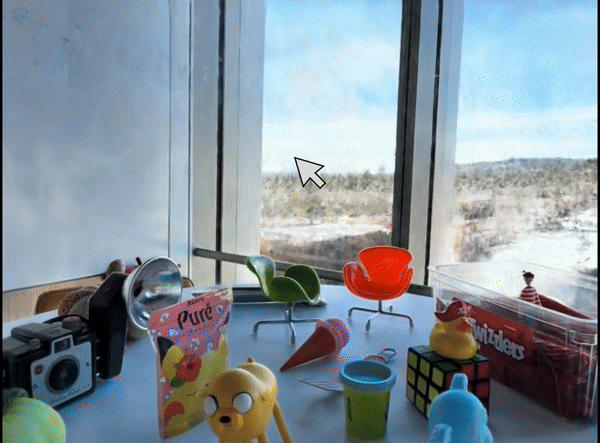Projects
Contrastive Gaussian Clustering:
Weakly Supervised 3D Scene Segmentation
Developed a novel approach for 3D scene segmentation and generating 2D segmentation masks from any viewpoint. This method leverages 3D Gaussians to model scene appearance and includes a segmentation feature vector for each Gaussian. By using contrastive learning and spatial regularization, the model effectively clusters Gaussians for 3D segmentation and projects them
for 2D mask generation.

2024
MEMEX
I worked on developing MEMEX, a project that allows users to create augmented reality (AR) experiences by attaching their personal memories and narratives to real-world locations and objects. This promotes social cohesion by encouraging interactions between communities at risk of social exclusion. MEMEX leverages an open-source knowledge graph for storytelling, enabling automatic linking of images to locations and creating immersive augmented reality experiences.

2023
MIRO
This project is my Master's thesis project, Mirò, unique mirror that enhances typical mirror functionality by enabling real-time interaction. The project's purpose was to enable Mirò to interact with users by implementing augmented reality filters, leading to the creation of four diverse AR filters. This involved integrating Google Mediapipe's advanced solutions with Qt, the chosen framework for Mirò, and adapting Mediapipe functionalities for these filters.
Key points:
-
Virtual Background: Users can change the mirrored background by swiping up or down, choosing from several available images.
-
Touchless Drawing: The filter enables users to draw on the mirror without physical contact. It recognizes two hand gestures, one for drawing and another for erasing.
-
Facial Effects: Virtual elements like glasses can be added to the user's face in the reflected image. A menu allows users to select desired augmentations.
-
Virtual Eye Color Changer: Users can change their eye color using a menu that offers various color options.
-
Library Implementation: Integrating Mediapipe with Qt was a key technological challenge. The project successfully built and integrated a shared library for Mediapipe solutions into the Qt program.
-
Real-time Tracking: Achieving real-time tracking of user movements in front of the mirror was essential for the touchless interaction and overlay of virtual elements. This was made possible by modifying Mediapipe solutions for use in the Mirò framework.


2022
Augmented Reality Portal
This project is the final project of the Computer Graphics and Augmented Reality course. It is an AR game with three levels. It starts by detecting planes and instructs the user to place the game room on one of these planes. Once set up, the game begins, allowing users to follow instructions provided by a virtual butterfly. The game's storyline involves monsters attempting to breach the room from the real world. Users must eliminate these monsters to earn coins and purchase furniture for the room.
2021
AI Agents in a Parking
This project, is the final project of the Multi-Agent Systems course, focuses on training AI agents (cars) to park in a 3D environment using Unity's ML-Agents framework. The project employs deep neural networks trained with the Proximal Policy Optimization (PPO) algorithm. It starts with a single agent but scales up to multiple agents.
Key Points:
-
Unity Platform: Unity's 3D development platform and the Unity ML-Agents Toolkit provide the environment for training intelligent agents.
-
Implementation: Two scenarios are implemented, one with a single car and another with two cars, all trained to park. The environments are dynamic, with changing starting positions and available parking lots.
-
Results: Training outcomes indicate increased cumulative rewards and shorter episode lengths over time for both single-car and two-car scenarios.

2021
Social Distance Game
This project was completed as the final project of the Computer Games course in September 2020. It addressed the COVID-19 pandemic through an educational game. Players navigated a city street, maintaining social distance and collecting masks for donation.
Key Points:
-
Educational Purpose: The project educated players about social distancing and mask use during the pandemic.
-
Gameplay: Players maintained social distance while collecting masks for donation on a city street.
-
Challenges: The game's difficulty increased over time, adding more people and speed, making social distancing more challenging.
-
Power-Ups: Angel power-ups allowed temporary flight for enhanced mask collection.

